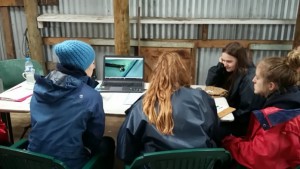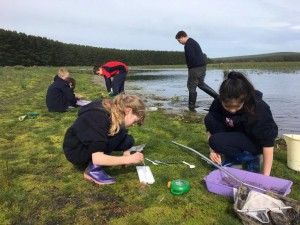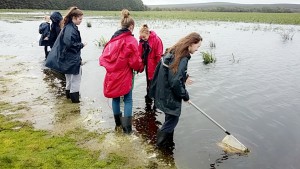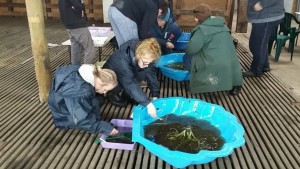Budding young scientists explore the underwater world at Mt Burr Swamp!
Lauren and Michelle recently hosted two fantastic aquatic workshops at Mt Burr Swamp for students from Newbery Park Primary School and Millicent High School. The clinics are part of the ForestrySA Schools Program which focusses on biodiversity education, including corridors. This workshop was aimed at teaching students about the importance of aquatic invertebrates and what they can tell us about the health of our waterways.
At the beginning of the workshop, Lauren spoke to the student’s about the history of Mt Burr, explaining that NGT was slowly converting the property from a working farm to a nature reserve, which included restoring the freshwater wetland. The students learnt about the value and ecological importance of wetlands such as Mt Burr Swamp and the many type of animals they support. The students also learnt about the importance of waterbugs in the food chain of a wetland ecosystem and their usefulness as indicators of aquatic health.
The student’s had a great time scooping samples from the wetland and searching through their collection to see what waterbugs they could find. After collecting their waterbug samples, students moved to the woolshed where they used simplified taxonomic keys to identify the different bugs. Students were also given the opportunity to select a bug and view it under a microscope, which facilitated a discussion about the function of different body parts. Working in groups, they completed a datasheet, noting down habitat information and calculating an overall score of aquatic health based on their waterbug samples. It was fantastic to see the students engaged in the activity and enjoying a day out at Mt Burr.

Using taxonomic key sheets and microscopes set up in the Mt Burr wool shed, the student’s identified 11 different groups of aquatic invertebrates and filled out some worksheets learning about land use, vegetation types and how the waterbugs found can give them an idea of water quality.
The Mt Burr swamp restoration project is well underway and is a great learning resource for the community and regional schools. The site is open to any schools that may be interested in a waterbug educational experience. If you are interested, please get in touch.




